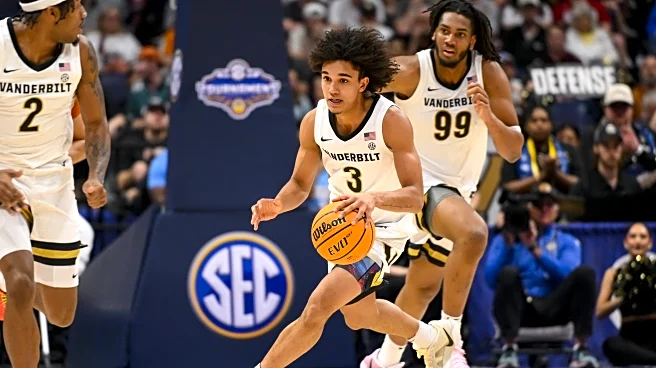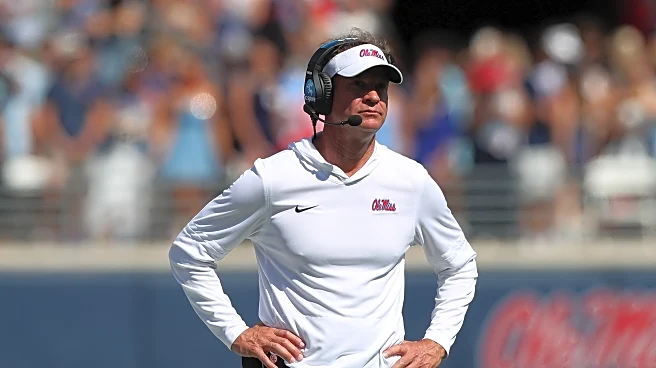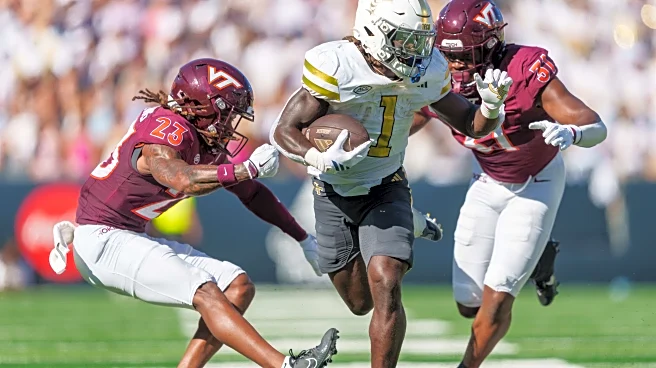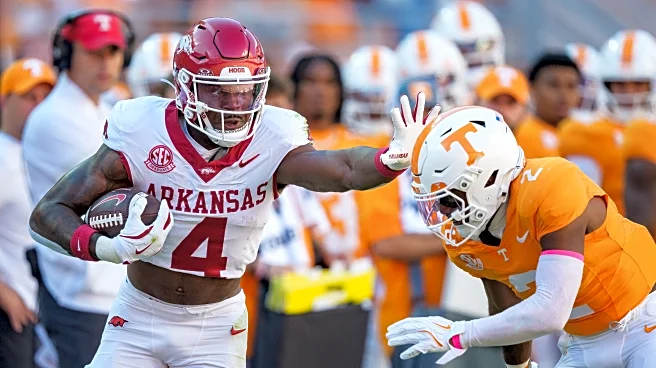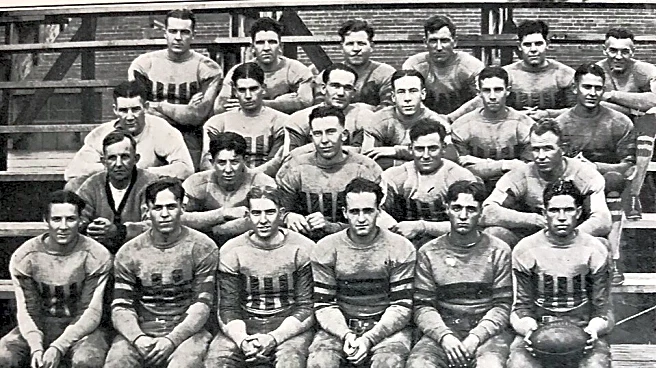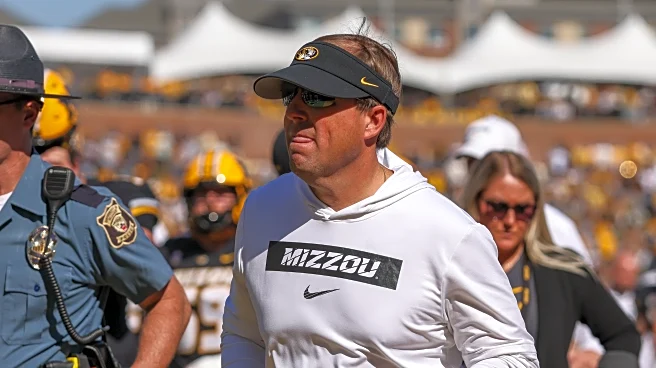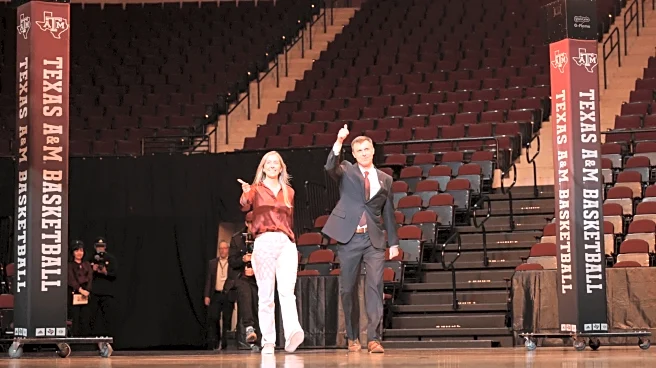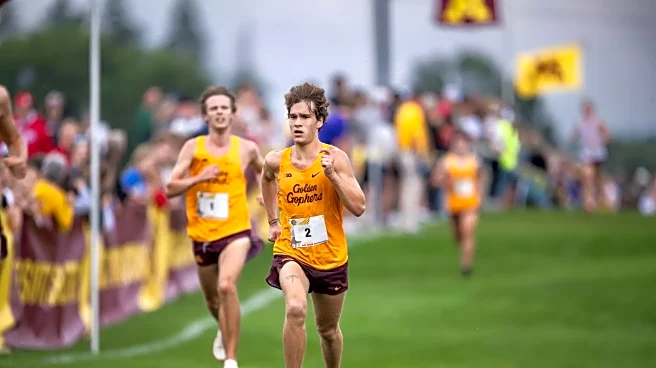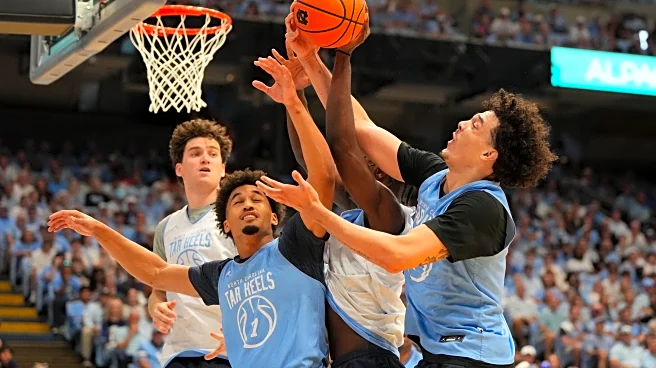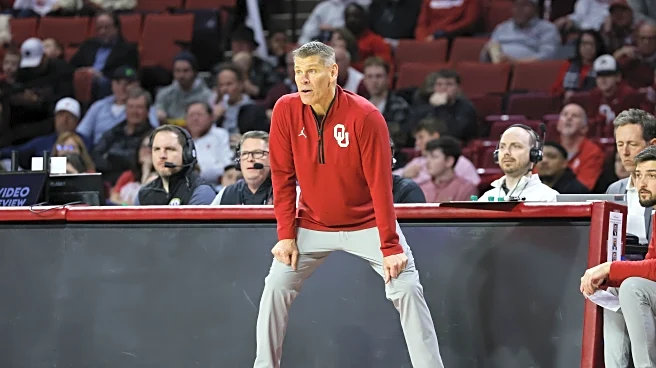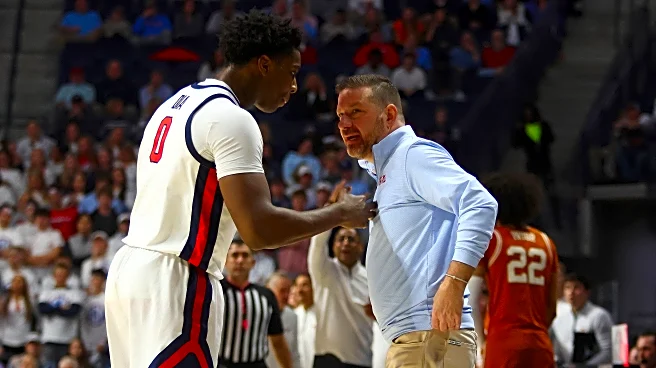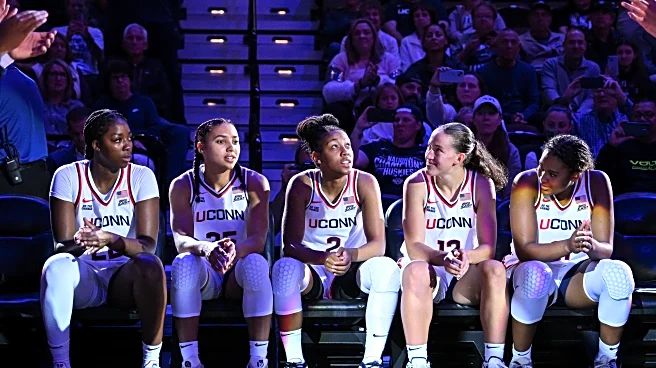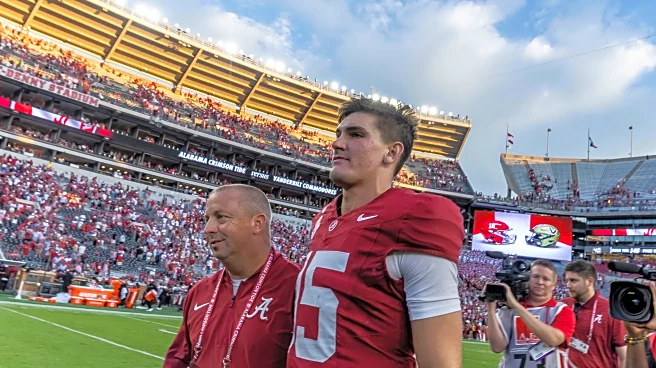Heading into the 2024-25 season, there were few who thought much, if anything, about the Vanderbilt Commodores. After all, Vandy had ceased really caring about their revenue sports in any real way. At least from an outside view. Their football team was awful and had been awful for decades. And the basketball team had a few solid recent seasons, but since the SEC expanded, also had the worst overall record in the league.
Point being, we got used to Vanderbilt being bad.
So it shouldn’t have surprised
anyone when they were picked last by SEC Media before the season. Here, we had higher expectations. Mostly because we spend (probably too much) time looking at each roster and the construction of it, then we look at how a coach typically uses their roster, and what you saw was that Vanderbilt was going to be pretty good.
It’s not even that the ‘Dores were great when everyone expected them to be bad. Just that they were not bad, and in comparison to the rest of the league they were competitive again. We picked them 12th and they finished 12th, but still safely in the Tournament, for the first time since 2017.
So what’s next for Mark Byington in his second year?
Previous SEC Previews:
- 11. Texas A&M Aggies, 8-10
- 12. Oklahoma Sooners, 8-10
- 13. Ole Miss Rebels, 7-11
- 14. Georgia Bulldogs, 6-12
- 15. South Carolina Gamecocks, 4-14
- 16. LSU Tigers, 3-13

Vanderbilt Commodores
- Last season: 20 – 13 (8-10 in conference) #48
- The Masses Prediction: 9th in conference, 8.01 – 9.99
- SEC Media: 11th
- Analytics Average: 7th in conference, 24th overall

HEAD COACH: Mark Byington | 2nd Season, 20-13
After replacing the well regarded but unsuccessful Jerry Stackhouse last year, Mark Byington had to start from scratch. He quickly built a team which fit his style of playing fast and rolling bodies. Ask anyone who the Commodores best player from last year and they might be hard pressed to name one. Their success was by committee, which is how Byington likes it. He only used 5 starting lineups, but nobody averaged more than 63% of the minutes, or roughly 25.2 minutes per game.
For a first season, Byington more than proved his chops. After a quiet non-conference, the ‘Dores took down top five Tennessee at home, then a week later beat Kentucky, they also beat a ranked Texas A&M team on the road, and it was obviously enough to fit Vandy into the tournament.
A four game losing streak to end the season may have muddied the water, but there’s no doubt Byington should consider year one a success. Vanderbilt re-established itself, at the very least, as not the pushover most thought they would be. He’s skilled in navigating the portal and finding a healthy amount of under utilized and undervalued talent. After winning big at Georgia Southern and James Madison, Byington has his sights set on doing the same in Nashville.

Perhaps the slight towards Vanderbilt preseason last year was more habitual. Half of their last 10 seasons had a win rate less than 40%. That’s a tough way to live, especially with the SEC in a down year. Last season was the best win percentage since 2012, which was about the peak of the Kevin Stallings era. So that’s a very good first year, eh? Then you consider Vandy was playing in the best conference in the country by a lot and the turnaround is more impressive.
Expectations for Vanderbilt had to change from outside the program, at the administrative level. With Byington in place, a much healthier approach to NIL, and the needed investment, the tournament should be the expectation, not the exception.
LOST PRODUCTION
4th in % minutes, 64.41% | 4th in % points, 66.17% | 7th in
% possessions, 70.41%
Losing over 60% of your production from last season and still being amongst the top 4 for returning production is a sign of the times. Surprising though was how much Vandy lost to the transfer portal, considering the building Byington did in his first year. Mostly because Jason Edwards, the Commodores leading scorer, and Jaylen Carey, a post who Byington brought with him from James Madison, both left for greener pastures. Carey landed at Tennessee, maybe Vandy’s most heated rival, and Edwards signed with Providence. But it was still surprising to see two fixtures of the rotation leave after such a quality season.
M.J. Collins also entered the portal, but he was a bit of a wing without a home. A quality defender, but an inconsistent offensive weapon, Collins ended up at Utah State. The rest of the lost production was lost via graduation, with AJ Hoggard, Chris Manon, and Grant Huffman all graduating.


One of the more underrated players in all the SEC last year was Devin McGlockton. He only averaged around 10 points per game, but McGlockton held the highest BPR on the team last year thanks to the teams highest defensive rating. Tyler Tanner, a man who had just a 9.2% turnover rate on the season, returns to steer the ship again. Tanner is another underrated player coming back and I think he’ll be overlooked because his point production wasn’t anything that jumped off the page. But his reliability with the ball in his hands is where he created his value. Sometimes the best possessions are the ones good players get into the hands of those who can score, and that was Tanner.
Also coming back is Tyler Nickel, the second leading scorer and top shooter from a year ago.
Still, Byington needed to hit the portal hard. And again it’s a list of undervalued players. The highest rated player coming in is Cornell transfer AK Okereke, whose player profile looks a lot like McGlockton. He’s a big and physical forward who likes to grab the ball off the glass and push pace. He’ll post up a little, he’s capable of spotting up, thought not a great shooter, but he’s also a very good defender. Byington had success adapting the play-style of former Cornell wing Chris Manon last year, so why not try it again with Okereke?
Duke Miles spent as much time committing to schools as he in did the transfer portal last spring. Miles began his career at Troy, then left for High Point where he broke out as a scorer and parlayed that performance into a spot at Oklahoma. But he went shopping and started by committing to Texas A&M, then flipped to Virginia, and ended up at Vanderbilt. Miles has good size for a lead guard and had a career high in three point shooting last year at 43% on just 90 attempts.
Frankie Collins was brought in as an additional ball handler, but he’s never been an efficient offensive player. Provided he’s not shooting, Collins can be a reliable defender and a good distributor. Tyler Harris could be a good sleeper addition, he has great size for a wing at 6’8, and can’t be left open as he had a 1.47 points per possession on catch and shoots from beyond the arc. Mason Nicholson and Jalen Washington were added to provide some depth on the interior. Mike James, and former 4-star top 100 player, is coming off a knee injury and a medical redshirt last year at NC State, but was a higher usage wing on two pretty bad Louisville teams. And George Kimble III is expected to miss the season with a medical redshirt after transferring from Eastern Kentucky.
Yes, that Freshman’s name is Chandler Bing. Yes that’s his real name.


No matter who the starters are, everyone is going to play. At least as long as Byington’s historical approach holds this season. As was mentioned above Byington rarely takes players over 70% of the minutes and last season nobody topped 63%. If someone on his roster turns into a Conference player of the year type, he’ll take them up to around 75%, but I’m not sure there is a player like that on this roster.
Mostly, McGlockton picks up more minutes because of his versatility. He’s consistent on offense, even if he’s unspectacular, and he’s a sound defensive presence and a good rebounder. It’s possible his minutes get eaten into by surplus play from Okereke, and if Mason Nicholson and/or Jalen Washington can provide something more than expected at the five spot. If they can’t, Byington is accustomed to playing with a smaller interior, and keeping good size around the perimeter, where Mike James, Tyler Harris and Tyler Nickel can all provide a boost.
Tyler Tanner is a bit of a key here as he wasn’t asked to do much offensively last year, but was so sound in his role it will be good for the program if he’s able to take a big step forward and provide a bit more on the offensive end without suffering higher turnover rates or a dip in efficiency.


Mark Byington has a smart and creative schedule here because there are no top 40 opponents, and yet there’s potential for three Quad 1 games, and three or four Quad 2 games. There’s also 6 quad four games but just three of those are super layups against sub 300 teams.
Obviously the concern is margin for error with two road games standing as your Quad 1 opportunities and no guarantee you’ll face the only Q1 team in the Battle 4 Atlantis, Saint Mary’s, unless you each with your first two games. The Battle 4 Atlantis has been one of the better marquee MTEs in recent years but it’s been swallowed alive by the Players Era tournament in Las Vegas.
But the opportunity exists for Vandy to have a really strong non-conference record with several quality Q1 wins and will not have faced anyone who might finish in the top half of the SEC. Which is good because the SEC schedule provides them few breaks.
THE RULING
The framework of this roster looks better than last year. Jaylen Carey was the only player listed over 6’7 who saw the floor with any regularity last year and it showed as the ‘Dores were one of the worst rebounding teams in the league, but even moreso because the defense struggled to get stops. Efficiency wise Vanderbilt was the worst defense in the league. They have better size and athleticism throughout the roster, but there is still a big question in the front court.
It’s going to be important for them to get something from Jalen Washington and Mason Nicholson, or maybe freshman Jayden Leverette. Protecting the rim and working to keep opposing offenses out of the lane will go a long way towards helping this team defensively. McGlockton provided a workmanlike effort guarding a lot of fives last year, perhaps AK Okereke can help there this season, but the best case is getting undersized fours away from trying to defend some of the more sizable centers in the conference.
Vanderbilt also didn’t shoot the ball all that well from outside. To make up for it they did get to the free throw line a lot, and were solid in the midrange. What often gave them a chance was forcing turnovers, while not turning the ball over. They should maintain the same level of ball control, but this group has a chance to be a lot better from outside. Combined every player projected into the rotation has taken over 1,600 threes and hit on 35.5% of them. Last year’s team shot 32.5% from deep, so a 3 percentage point increase would have put them on par with Florida’s rate last year.
Improved three point defense and improved rim protection will go a long way. But so far only one of those things are projectable, and the answers to the front court questions aren’t exactly a pair of aces. Washington provides the most likely solution, as he’a former 4-star top 60 player who just never developed past being a solid rotational player. Nicholson wasn’t used much other than to occupy space at Jacksonville State, and it’s hard to count on freshmen bigs, especially when they come in ranked below 100.
Overall Vanderbilt should be better on the wings, and maybe equal or slightly worse with their ball handling. It all comes down to what they get out of their front court.
My Results: Vanderbilt Commodores — 10th in Conference, 8-10
About the preview: a number of respected basketball bloggers were asked to submit one pick for the entire league schedule game by game. The game by game option allows us to account for the unbalanced schedule when addressing any kind of power rankings. Each set of picks are reflected in “the Masses” picks. Included in “the Masses” are various SEC media members who made picks at my request, as well as additional credit given to the analytics projections.
If you’d like to submit your picks, click here for the Google Form we used. If you want to know your results, send me an email.
Additionally, instead of relying solely on KenPom.com for the analytics site projections, we’re taking the average of the four main sites (EvanMiya.com, BartTorvik.com, Haslametrics.com, and KenPom.com) to give a closer consensus picture. These are weighted a touch for reliability.
The projections: This is new! In an attempt to be as accurate as we could be we increased the amount of analytics used to make individual projections which influenced how these teams slotted in order. Matt Watkins used an in-depth method for projecting the entire SEC transfer list, we then mixed in EvanMiya.com’s BPR projections, and BartTorvik.com’s preseason individual projections to round out the expected production based upon how each coach routinely uses his rotations.
GLOSSARY
* – an asterisk denotes a known walk-on player
GP – Games Played
%min – percentage of total available minutes played, does not account for time missed due to injury
%poss – percentage of team possessions the player is responsible for ending a possession, whether by making a shot, missing a shot not rebounded by the offense or committing a turnover. For returning players this is noted as a percentage of total team possessions. For newcomers it was total possessions when that player was on the floor, better known as Usage Rate.
ORtg – Offensive Rating, similar to a points per possession but averaged out over 100 possessions. So it’s how many points a player would score if they were responsible for 100 possessions.
BPR – Bayseian Performance Rating, a single player efficiency metric created by Evan Miyakawa to determine both offensive and defensive impact when a player is on the floor.
PAR – Points Above Replacement, a Rock M+ proprietary rating measuring projected on-off impact adjusted for time on the floor.
PPG – Points Per Game, RPG – Rebounds Per Game, APG – Assists Per Game: All traditional statistics used to measure player production.
For newcomer player rankings, we used EvanMiya.com’ s rankings for transfers, and 247sports.com ‘s Composite Rating for Freshmen and Junior College signees.
